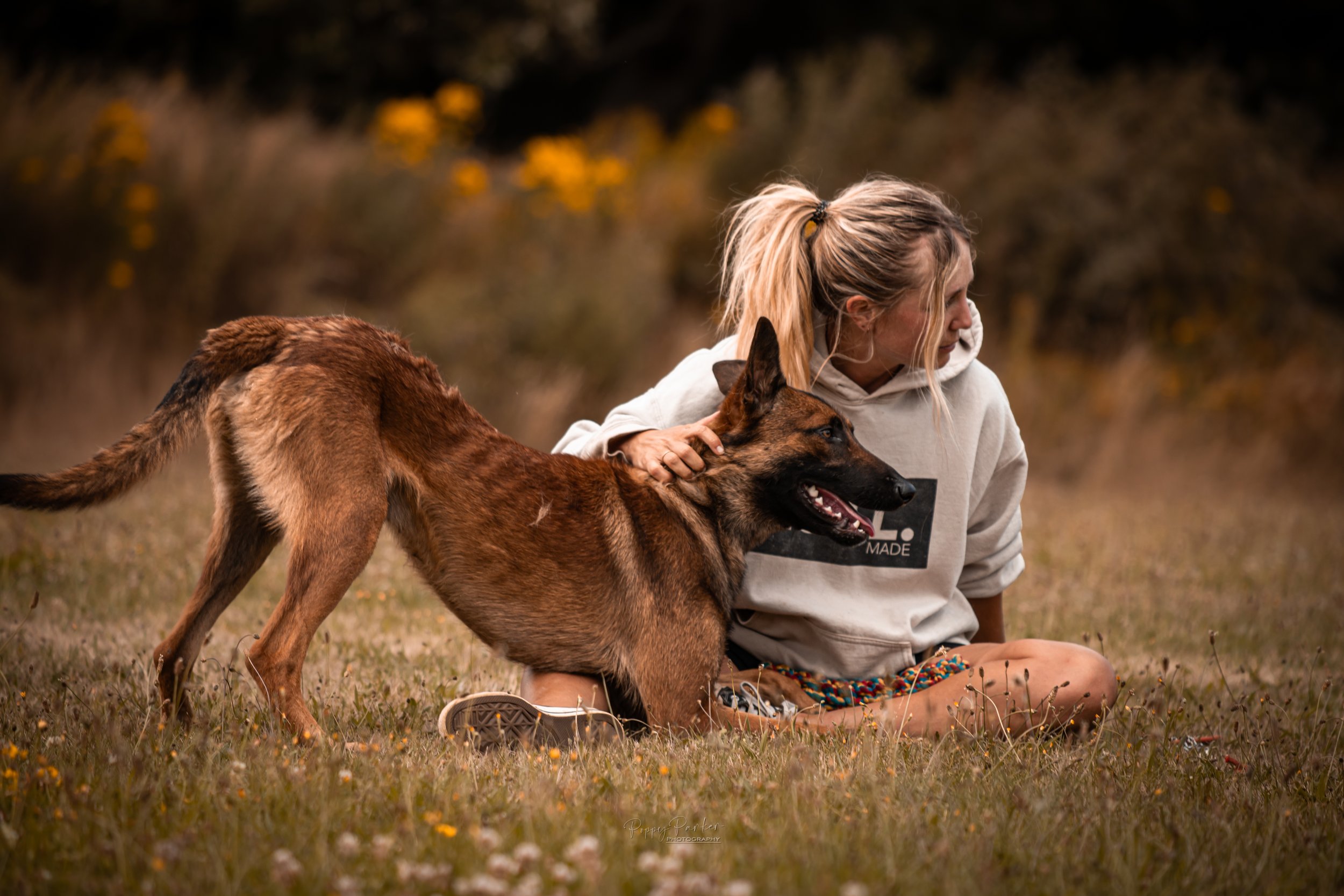Creating Calm at Home: How to Use Structure to Improve Your Dog’s Behaviour
Let’s talk about structure.
It’s one of the simplest and most powerful tools in dog training, and it’s often the missing link when we’re struggling with unwanted behaviours like jumping at the door or over-excitement at meal times. When we add structure to our dog’s environment, we’re essentially giving them a map for how to navigate the world. It helps them feel more secure, more focused, and more at ease in their surroundings. And trust me, when dogs feel calm and clear, you’ll see fewer reactive behaviours.
If you’ve noticed your dog’s behaviour becoming a little more chaotic lately, it might be time to revisit the basics and add more structure to your home life. Whether you’ve got a new puppy, a rescue dog who’s still adjusting, or a seasoned dog who’s getting a bit too comfortable with boundary-pushing, this post will guide you through the simple steps to create a calm, structured environment that benefits both of you.
Why Structure is a Game-Changer for Calmness
I’ve said it before, and I’ll say it again: structure doesn’t mean being strict, rigid, or controlling. It’s about providing your dog with clarity and consistency. The goal isn’t to set up a “command-and-control” environment; rather, it’s about giving your dog clear boundaries so they can understand where they’re allowed to go, when they can engage, and how they should behave in certain situations.
By creating a structured environment, you remove the guesswork for your dog and make it easier for them to relax.
The Power of Crate Training: A Calm, Secure Space
Crate training is one of my favourite tools because it offers so much more than just a place to contain your dog when you’re not around. A crate becomes a safe haven, a space where your dog can retreat to and feel secure. And let’s be clear: this isn’t about punishment. The crate is not a cage, it’s a mini sanctuary that allows your dog to relax, unwind, and even have some much-needed alone time.
Here’s how I approach crate training:
Make it positive: Don’t just shove your dog in and shut the door. Instead, make the crate a place your dog wants to go. Feed meals in the crate, give treats, and use the crate for naps. Over time, your dog will associate the crate with comfort and calmness.
Start small: Gradually increase the time your dog spends in the crate. Begin with just a few minutes and slowly work up to longer periods as your dog becomes more comfortable.
Consistency is key: Your dog should know that the crate is always available as a calm space, but that it’s not punishment. Use it consistently, but never in anger or frustration.
When used correctly, a crate will become your dog’s personal retreat, helping them decompress and find peace.
Managing Access: Boundaries, Not Restrictions
It’s easy to let your dog roam free all day, especially if they’re well-behaved most of the time. But if you’re dealing with behaviours like door rushing or constant excitement, it’s time to reconsider how much freedom they have. Just like children benefit from structure in their routines, dogs thrive when they know where they can go and when they’re allowed to engage.
Use a pen or baby gate: These tools are fantastic for controlling access to certain areas of the home, especially when you’re not around to supervise. It gives your dog clear boundaries without feeling restricted.
Utilise your lead: The lead is such a useful tool, and often overlooked. Keeping the lead on your dog can help you stop them grabbing things they shouldn’t, or counter surfing. You can simply grab the lead and avoid conflict or your dog playing ‘‘keep away’’ with your underwear!
The goal isn’t to restrict your dog’s fun, but to help them learn that there are times for play and times for calm. Giving your dog boundaries helps them feel secure and reduces the likelihood of over-arousal or confusion.
Why Structure Brings Peace to Your Dog (and You!)
Adding structure to your dog’s life doesn’t just change their behaviour, it changes the entire dynamic in your home. By creating clear boundaries and consistent routines, you’re helping your dog understand the rules of the house, which in turn makes them feel more secure. And a secure dog is a calm dog.
Structure brings clarity, and clarity brings calmness. It’s the backbone of peaceful living with your dog, whether you’re working on preventing jumping, reducing anxiety, or simply creating a better environment for both of you.
Ready to Create a Calm Home for You and Your Dog?
It doesn’t take a drastic overhaul to create a calmer, more structured home. Just a few tweaks in your daily routine can make all the difference in your dog’s behaviour and your peace of mind.
In the next post, we’ll be diving into the power of hand feeding to build motivation and engagement with your dog. It’s a simple yet powerful tool that enhances focus and connection. You won’t want to miss it!
Until then, remember: structure is a gift you give your dog and one that they’ll thank you for, day after day.
Looking for more training support?
For more tips and in-depth resources, join my online membership where you'll get access to exclusive training videos, live Q&As, and a supportive community of dog owners.
→ Join here
Follow me on Instagram: @ravenk9dogtraining
Amazon Storefront:
If you’re looking for the same tools I use to create structure at home, check out my recommended products below:

